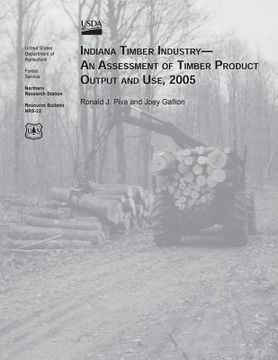Indiana Timber Industry-An Assessment of Timber Product Output and Use, 2005 (in English)
Synopsis "Indiana Timber Industry-An Assessment of Timber Product Output and Use, 2005 (in English)"
In 2005, the primary wood-using mills in Indiana processed 84.2 million cubic feet of industrial roundwood, a decrease of 8 percent from 2000. The amount of industrial roundwood harvested during the same period decreased by 10 percent, from 83.0 million cubic feet in 2000 to 74.2 million cubic feet in 2005. Saw logs accounted for over 90 percent of the total industrial roundwood produced in 2005. The most harvested species groups in 2005 were red oaks, yellow-poplar, white oaks, hard maple, and hickory. Between 2000 and 2005, the production of saw logs decreased by nearly 10 percent, veneer logs increased by 26 percent, and pulpwood decreased by more than 30 percent. In 2005, the harvesting of industrial roundwood resulted in 59.2 million cubic feet of harvest residues left unused, on the ground at the harvest site. During the processing of industrial roundwood at Indiana's primary wood-using mills, 1.3 million green tons of mill residue was produced. Most of the mill residues were used at pulp or particleboard mills, or for miscellaneous uses such as mulch, livestock bedding, and small dimension lumber. Only 1 percent of the mill residues were not used for a secondary use.

